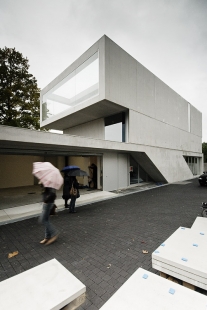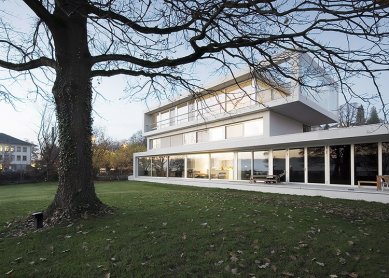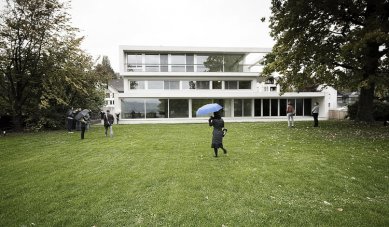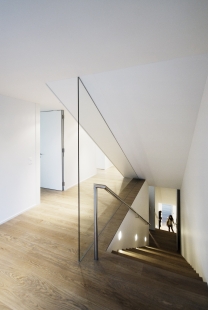
Lakeside, Zurich Area

 |
Three volumes of pigmented concrete are stacked and shifted offset to each other. They are assigned programmatically and are connected through a Cascadian staircase. At the rear of the property, the diagonal lines make the cascading main staircase visible. This and the shifted volumes dissolve the massive, rather closed volume towards the main road.
At the front of the property, the house is open. Large framed windows provide an unobstructed view over the garden and the lake. On the ground floor, windows are recessed in order to contribute a part of the building to a terrace.
The three stacked volumes connected by the Cascadian staircase, combine different programmatic scenarios. Living takes place on the ground floor, the first level is designated for the children, and the second floor is for the parents. The structure is defined in such a way that single rooms can be connected to one large room, in addition, the cascade allows every combination to connect and circulate, keeping the house programmatically adaptable to future living conditions.
0 comments
add comment



























